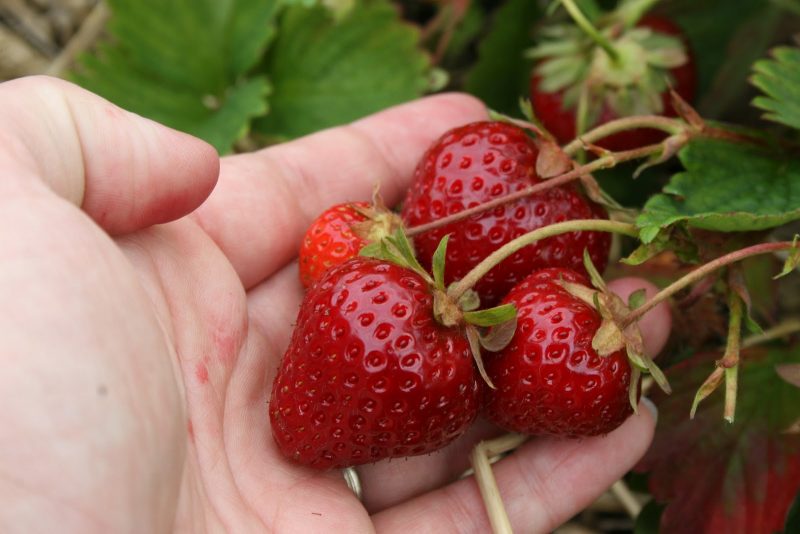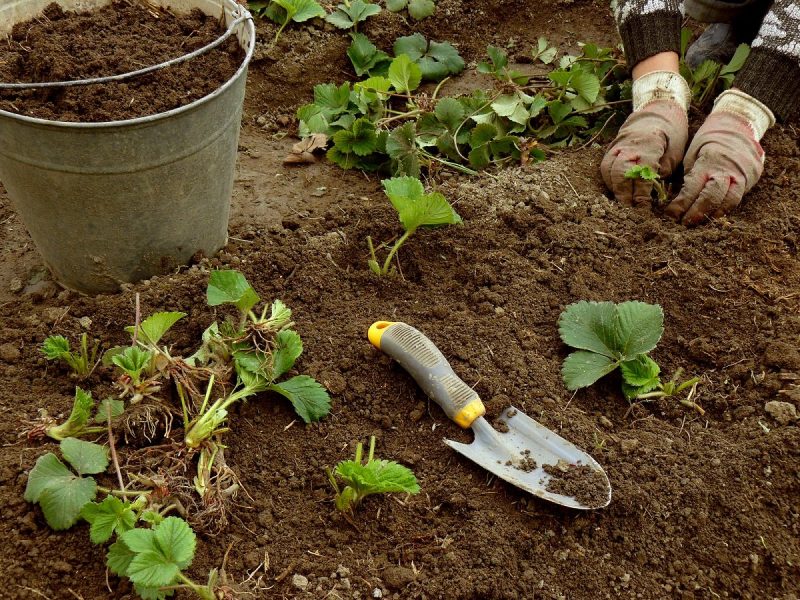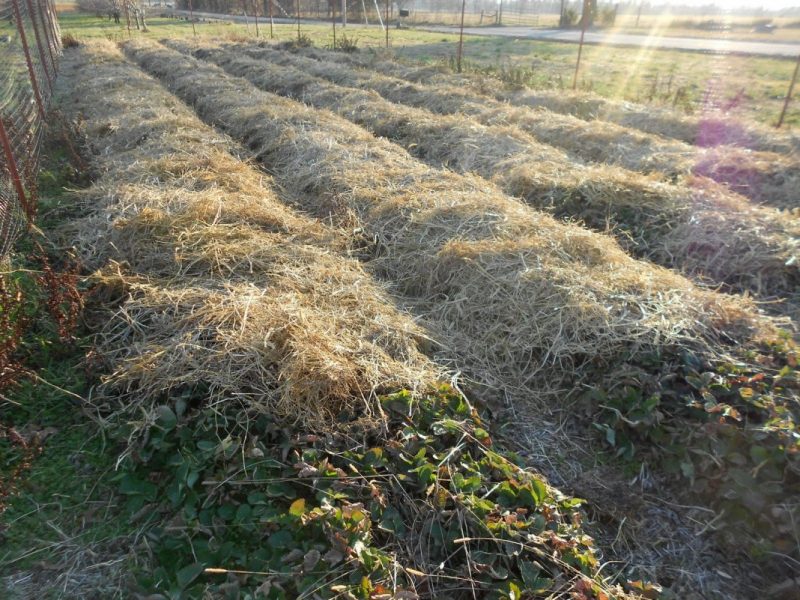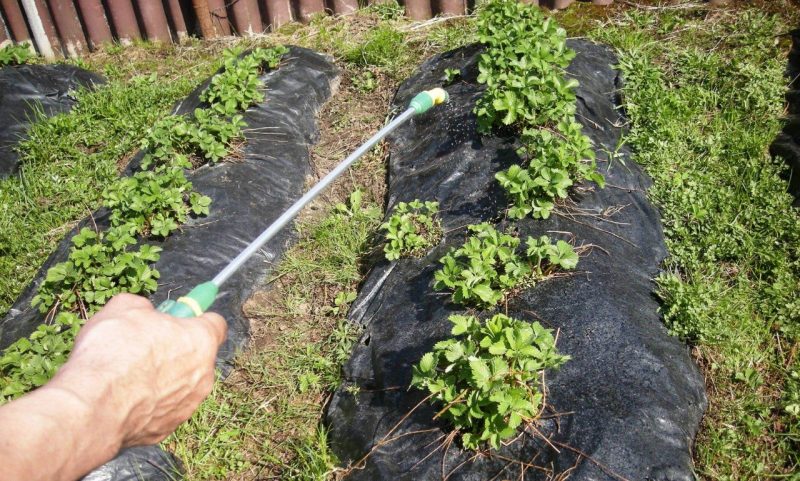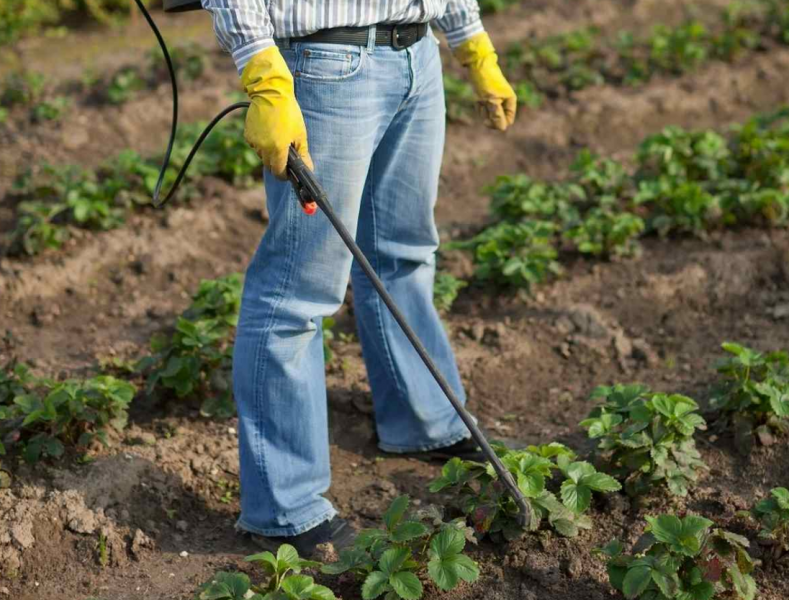Strawberry "Malvina" refers to late-ripening varieties, and gardeners' reviews about it are always only the most enthusiastic.
Material Content:
Characterization and description of the variety
From a brief description of the variety it follows that this late, large type of berry has high commercial qualities. Such a plant matures really very late, which allows you to enjoy the taste of strawberries until the end of July. The fruiting period is so stretched that it can be up to three weeks.
The berries are very beautiful, resembles a heart in shape, each can weigh up to 70 g. The peculiarity of the variety is that it produces few fruits.
The bush itself is very powerful, in height it can reach 50 cm. Sometimes the diameter of the rosette is 60 cm. The plant is unusually beautiful, they are pleased to admire their beds.
Advantages and disadvantages of strawberries
A huge plus of the variety is disease resistance. But some pests will have to process bushes several times during the season. But, if you choose the right predecessors before planting the berry, problems can be avoided.
And also it is worth noting such an important advantage of the species as its frost resistance, which, however, is too low for cultivation in the middle lane. In regions with snowy winters, plantings will have to be additionally covered for the winter.
Due to the fact that the berry has very powerful sockets, they have to be planted at a considerable distance. This takes away the precious area of the plot, which is a disadvantage of the variety. And also the yield of "Malvina" is 30% below the standard.
The genetic defect of the variety is interesting: leaflets appear directly on the berries.
The scheme and rules for landing in open ground
Observing the fairly simple techniques of agricultural technology of growing "Malvina", you can get a good harvest of berries. The first thing to do before landing is to decide on the site. Presented garden strawberries will grow well on sandy fertile light soil.
It is preferable to plant strawberries "Malvina" in late summer or early fall. The selected territory is dug up with a bayonet.
Strong and healthy sockets with a mustache, with 3-4 leaves, are suitable for planting. It is important that the roots are not too dry, otherwise the plant simply does not take root. This pattern of planting strawberries “Malvina” is observed: they are placed in rows, the step between outlets should be equal to 70 cm, and in the row-spacing they leave about 60 cm. Large bushes of “Malvina” need a lot of space and sun.
When planting, the dug holes are filled with water, and when it is absorbed, seedlings are planted. The roots are well spread, sprinkled with earth, and then lightly pressed. After the work, the plant is once again moisturized abundantly, but not under the root, but around the bush.
After planting, watering is carried out twice a day until the sockets are well rooted.
Features of cultivation and care
When other strawberry varieties are already ready to bloom, Malvina has not even given flower stalks.
Watering and feeding
At the beginning of the growing season, the berry is fed with nitrogen fertilizers. However, you need to be careful with such substances, since nitrogen causes the growth of green mass to the detriment of flowering and fruiting. Urea is added at the rate of 10 g per square plot. And bird droppings, which are bred with water at the rate of 1:50, are also useful. Like strawberries and cow dung, the composition of which is prepared at a rate of 1:10.
When the strawberries bloom, they are fertilized with complex mixtures in which there is a lot of potassium and phosphorus.
After collecting the berries, the bushes should be fertilized with potassium chloride or superphosphate, for which they add 20 g of the drug per square soil.
Organic fertilizers will also be useful, for example, when preparing a site for planting, it is enough to make about two buckets of rotted manure per square meter of land.
Important! If the variety grows on sandy soil, the dosage of organic fertilizers should be increased 2 times.
Watering the berry is often and plentiful. If moisture to the bushes is not enough, the fruits will become small and begin to bitter.
The best weed control method is regular weeding. Weed pulls nutrients from the soil, so it should be ruthlessly destroyed. Weeding is carried out the day after watering.
Preparing strawberries for the winter
Strawberry garden "Malvina" has a fairly high winter resistance - can tolerate a drop in temperature to -20 degrees. However, if severe winters are observed in the region, the plantation should be covered with straw, lapnik or hay.
Protection against diseases and pests
The variety is resistant to disease, but gray rot can hit the crop. This misfortune happens because of too plentiful watering or damp and cool weather. Symptoms of damage: the fruits become soft, putrefactive spots appear on them. If it rains too long, the entire crop may be lost. Such a disease is easier to prevent than to cure.
Prevention includes the following activities:
- Before flowering, the plantation is treated with copper chloride. For this, 1 tbsp. l the drug is dissolved in 10 l of water. 1 liter is added to the square of the bed.
- After collecting the berries, the beds are again treated with the same preparation, but a little shavings of laundry soap are added to the solution. It is permissible to replace copper chloride with a Bordeaux mixture.
In general, the variety is resistant to such common strawberry diseases as powdery mildew or wilting. Even a brown spotted plant becomes very ill.
Sometimes the berry is affected by pests. Of the parasites, the Malvina is attacked by the weevil. When it is discovered, the beds are treated with Aktara.
The plantation may also be attacked by thrips, against which sprayings are applied with “Aktofit” or “Fitosporin” preparations. To prevent the appearance of unwanted "guests" between the rows lay garlic or red pepper.
It is interesting:phytosporin - instructions
In case of damage by any pest insect, in order to prevent the larvae from spreading, it is necessary to carefully remove all infected parts of the plants.
The Malvina garden strawberry variety was bred only in 2010 in Germany, but it has already managed to win the love of our gardeners. In general, caring for this berry is no different from caring for other varieties of strawberries, and the time spent and the efforts put into it will more than pay off when collecting large, fragrant and deliciously fragrant berries.


